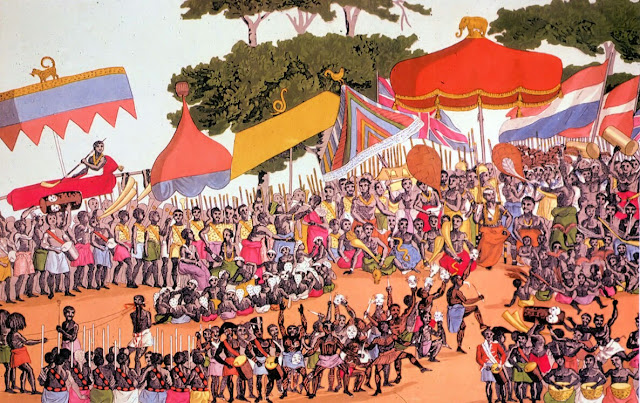 |
| An early 1800's depiction of the Ashanti Yam Festival |
African "Kings and Barons"
African feudalism is said to be strikingly similar to that of Europe in the eighteenth century. At the great annual festival of the Ashantis —the yam custom—all the Caboceers, Captains, and the greater number of tributary Kings or Chiefs are expected to appear at the capital. The Nobles or Captains against whom the King has cause of complaint are then placed on trial.
Sometimes a Chief who suspects that he has become obnoxious to the King will not trust himself in the capital without the means of defense or intimidation. Sometimes a powerful Caboceer will bring 8000 armed attendants. This is analogous to the dealings of a Monarch of medieval Europe with his great Barons.
As among other peoples, the office of King is in some cases hereditary and in some cases elective. There are limited and despotic Monarchies. Many African tribes have a "War Lord" who is one and the same as the "Peace Lord." American Indians and other peoples have a similar custom.
African Chiefs are said to be generally superior to their followers in physique. Compare the Chieftains and Kings of the Germanic and other peoples. The Chiefs of the Gold Coast have their Court forms and etiquette, their own customs and mode of living. African Kings have their insignia of Royalty the same as European potentates. Some Kings surround themselves with a certain amount of mystery and magic. Their persona are held sacred. The same practices and claims are made by rulers in other lands. — 1907
Etiquette Enthusiast, Maura J Graber, is the Site Editor for the Etiquipedia© Etiquette Encyclopedia
No comments:
Post a Comment